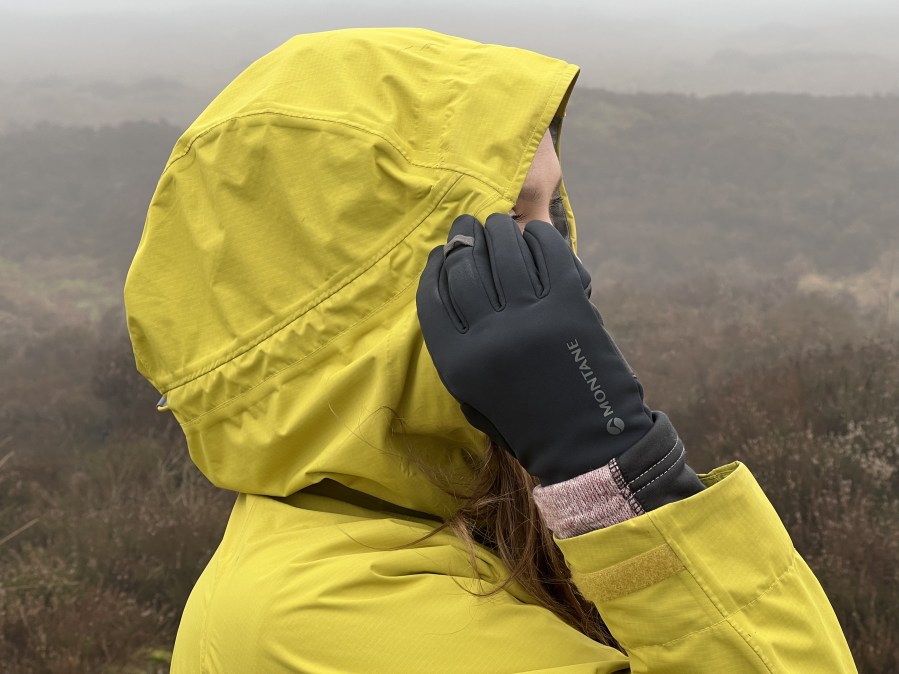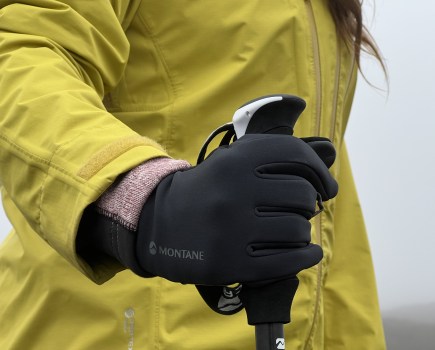It’s important to protect your extremities in the mountains. But with hundreds of hiking glove options out there, which would fit your adventures like… well, a glove?
Before you select the right pair for you, firstly, let’s get to grips (pardon the pun) with the difference between hiking gloves and styles. There are a few types of hiking gloves out there, primarily differentiated between the levels of warmth offered in the mountains. Durability, grip and dexterity are also key features in gloves for hillwalkers, especially those who are partial to a scramble in colder weather when the use of your hands is vital to your safety.
Words: Francesca Donovan | Main image: Francesca Donovan
You can read about the different types of hiking gloves and the special features to look for here.
For the purposes of this article differentiating between gloves by season, let’s take a look at the temperatures you’ll be facing and which gloves to choose accordingly.
Ideally, when mountaineering in winter, you’ll want to keep your gloves on at all times to prevent numb extremities impacted by snow, rain and windchill, which facilitate heat loss, not to mention the risk of frostbite. For this reason, cold weather mitts and gloves are built with highly insulating and usually waterproof materials. Close-fitting cuffs are a helpful addition to prevent snow and ice from getting into the glove and making contact with the skin and also fit under the cuffs of your jacket sleeves. Alternatively, gloves or mitts may have long gauntlet cuffs that fit over your sleeves.
Likewise, most good winter gloves are built with durable seams and fabrics to prevent rips and tears and thus, are slightly less flexible and breathable than thinner gloves for warmer temperatures. Look for a curved finger design if you’re worried about dexterity. Any gloves used for scrambling, whether insulated or liners, need reinforcements on the fingers and palms or they’ll wear out very quickly.
Winter gauntlets and gloves are advisable for anyone looking to take on snowy winter conditions.

Iona Andean testing out her gloves’ warmth and waterproofing in the Grey Corries.
Credit: Jessie Leong
Those who walk all year round could invest in a hybrid glove and liner combination as the liner can be worn in combination with your waterproof outer in extreme cold but also as a glove in its own right on more temperate days. Unlined waterproof shell mitts are also a lightweight way to boost warmth and waterproofness.
- Gear reviewers Lucy Wallace and Chris Townsend put the best winter gloves to the test. Read their verdict.
Three-season gloves (in other words, those that are lighter insulating) are a happy medium for your hand. Generally, designs are kept as lightweight and flexible as possible while also being carefully constructed with durable and protective materials and seams. To keep your hands comfortable, dry and warm throughout mild winters, spring, and autumn you’ll likely be looking at a compromise between warmth and dexterity when it comes to three-season gloves.
That brings us to base layer gloves or ‘liner gloves’. While some more recent liner glove models are waterproof and incredibly insulating, you’ll pay a lot for the additional features. Most are simply designed to sit underneath an outer shell glove and, as a consequence, focus on comfort, dexterity of movement and breathability.
As you’d expect, summer gloves are not designed for heat retention. So much so, you might wonder why people choose to wear gloves in summer at all. First and foremost, we’d always recommend packing a pair of gloves in your pack. Conditions can change quickly in the hills, and should you get caught out in an unexpected shower or even an emergency situation, you’ll be grateful for the hand protection, especially when the sun goes down in an open sky and temperatures can drop. Liner gloves are often the best lightweight and packable option to keep with you for these ‘just in case’ moments.
The other types of gloves you might bring along for summertime adventures are geared towards protection from the elements; namely UV rays from the sun and the natural rock around you. Think of climbers who are out all day using their hands.
Sun gloves and fingerless gloves, as well as some very lightweight liner gloves, are mostly designed to be comfortable and breathable in the late spring and summer months.
There are other options for those who get very cold hands due to circulation issues on short rambles, such as hand warmers but do bear in mind that anything worn inside a glove will immediately reduce dexterity.








